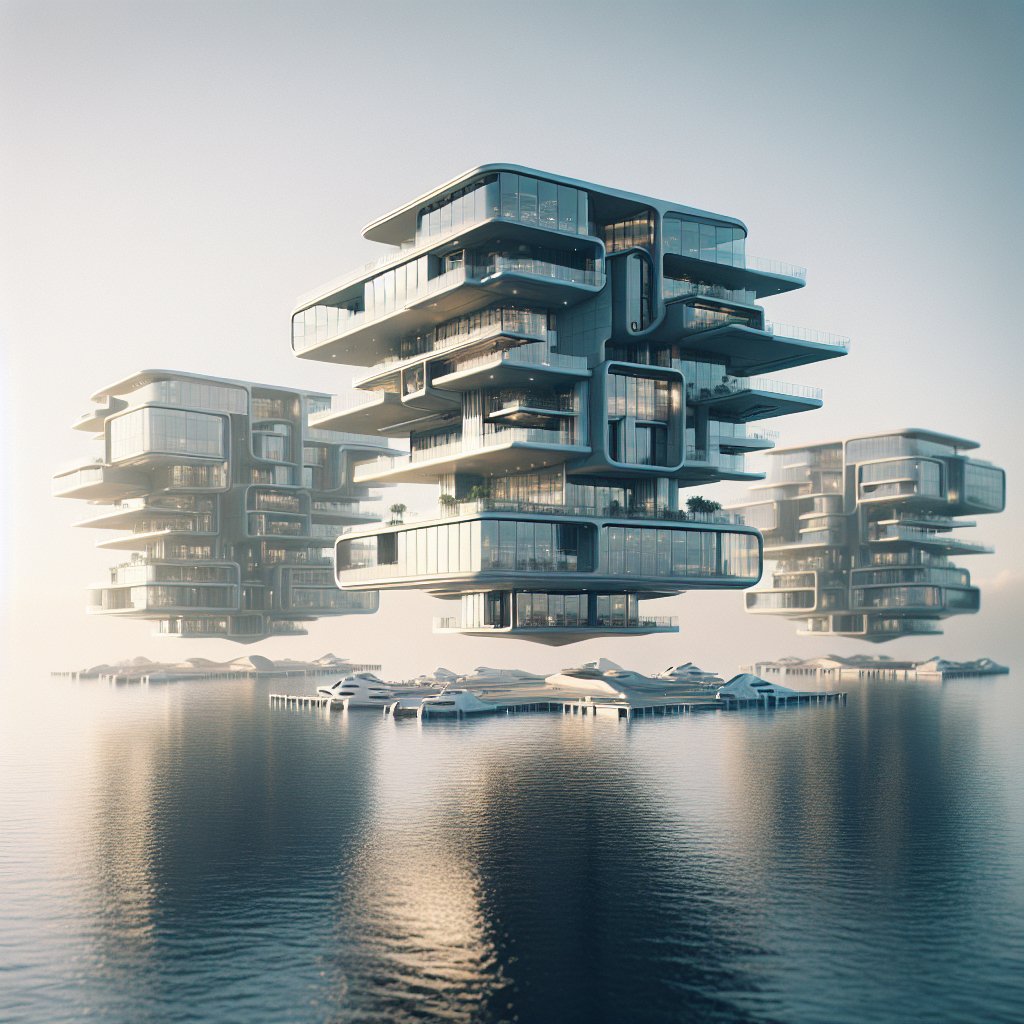Dubai’s Floating Buildings: The Future of Waterfront Living is a concept that has captured the imagination of architects, developers, and residents alike. As the city continues to push the boundaries of innovation and luxury, floating buildings represent a new frontier in urban development. These structures not only offer a unique living experience but also address some of the environmental challenges faced by coastal cities worldwide.
The Rise of Floating Architecture in Dubai
Dubai has long been synonymous with architectural marvels and groundbreaking developments. From the iconic Burj Khalifa to the man-made Palm Jumeirah, the city has consistently set new standards in urban design. The introduction of floating buildings is yet another testament to Dubai’s commitment to innovation and sustainability.
Floating architecture is not a new concept, but its application in Dubai is particularly noteworthy due to the city’s unique geographical and environmental conditions. With rising sea levels and limited land availability, floating buildings offer a viable solution for sustainable urban expansion. These structures are designed to withstand harsh marine environments while providing luxurious living spaces that are in harmony with nature.
One of the most ambitious projects in this domain is the Floating Seahorse Villas, a series of luxury homes partially submerged in the Arabian Gulf. These villas offer residents an unparalleled living experience, with underwater bedrooms that provide breathtaking views of marine life. The project exemplifies Dubai’s ability to blend luxury with sustainability, creating a new standard for waterfront living.
Environmental and Economic Implications
The development of floating buildings in Dubai is not just about luxury and innovation; it also has significant environmental and economic implications. As coastal cities around the world grapple with the effects of climate change, floating architecture offers a sustainable alternative to traditional land-based construction.
Floating buildings are designed to be energy-efficient and environmentally friendly. They often incorporate renewable energy sources such as solar panels and wind turbines, reducing their carbon footprint. Additionally, these structures can be built with materials that have a lower environmental impact, further contributing to sustainability efforts.
Economically, floating buildings present new opportunities for investment and tourism. Dubai’s reputation as a global hub for luxury and innovation attracts investors and tourists from around the world. The introduction of floating buildings adds a new dimension to the city’s real estate market, offering unique properties that cater to high-net-worth individuals seeking exclusive living experiences.
Moreover, the construction and maintenance of floating buildings create jobs and stimulate economic growth. As the demand for these structures increases, so does the need for skilled labor and specialized services, contributing to the overall economic development of the region.
Challenges and Future Prospects
While the concept of floating buildings is promising, it is not without its challenges. The construction and maintenance of these structures require advanced engineering and technology, which can be costly and complex. Additionally, regulatory frameworks and zoning laws need to be adapted to accommodate this new form of architecture.
Despite these challenges, the future prospects for floating buildings in Dubai are bright. As technology advances and the demand for sustainable living solutions grows, floating architecture is likely to become more prevalent. Dubai’s commitment to innovation and sustainability positions it as a leader in this emerging field, setting an example for other coastal cities to follow.
In conclusion, Dubai’s floating buildings represent the future of waterfront living, offering a unique blend of luxury, sustainability, and innovation. As the city continues to push the boundaries of what is possible, these structures will play a crucial role in shaping the urban landscape of tomorrow.









